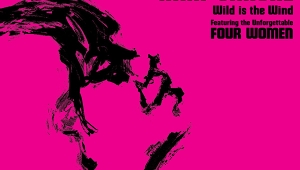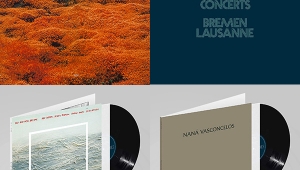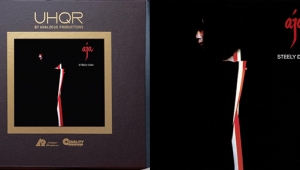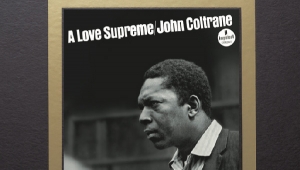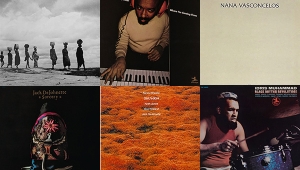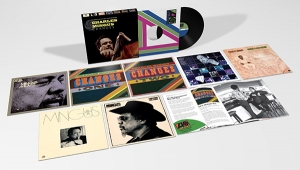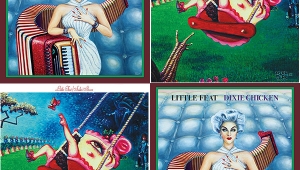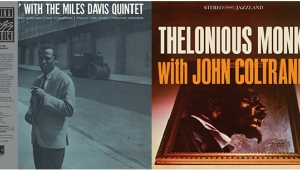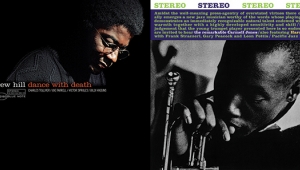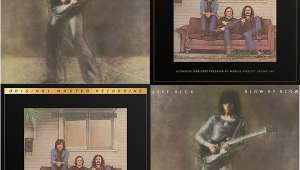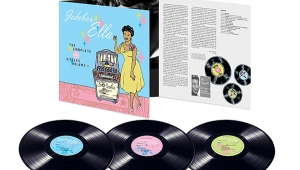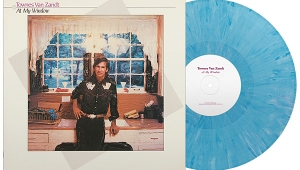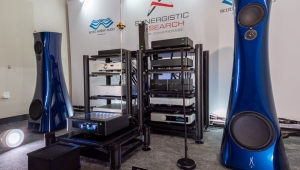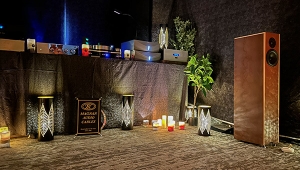| Columns Retired Columns & Blogs |
Revinylization #53: Craft Records releases Joe Henderson's Power to the People

In the late 1960s and the early years of the next decade, tenor saxophonist Joe Henderson, like many of his contemporaries, was listening to such albums as Miles Davis's Filles de Kilimanjaro and Miles in the Sky and pondering what it meant for his music. During this period, for better or worse, the rhythms and aggressive approach of rock music, including the use of electric rather than acoustic instruments, were mixing with jazz and giving birth to fusion. In hindsight, it seems inevitable that these two vital genres, both of which prize improvisation—be it on electric guitar or tenor saxophone—should become each other's major influence. Jazz fusion based in jazz (Mahavishnu Orchestra, Tony Williams Lifetime, Return to Forever), and jazz rock based in rock (Chicago, Blood Sweat & Tears, Soft Machine), evolved into major genres in the 1970s. From these tendrils, jazz pop, jazz funk, M-Base, and even smooth jazz have continued to spread.
Henderson began his musical journey as a teenager in Detroit in the 1950s. A devotee of Lester Young and Charlie Parker, he recorded extensively for Blue Note in the 1960s, both as sideman and as leader. By the late 1960s, he'd switched to Milestone Records and was working with producer Orrin Keepnews, branching out, exploring fusion and funk in his music. His music was also giving expression to his growing desire to press social and political issues, many connected to the civil rights movement.
With its activist title, 1969's Power to the People, one of the most eagerly sought-after and prohibitively expensive original pressings in the Henderson vinyl catalog, has now been reissued as part of Craft Records' Jazz Dispensary Top Shelf Jazz Series. With lacquers cut by Kevin Gray at Cohearent Audio, this 180gm reissue, pressed at Record Technology Incorporated (RTI) in Camarillo, California, is a welcome and long-overdue return of one of Henderson's most vital albums. Replicating the strengths of the original mix, this reissue has great presence and punch, adhering to the strict separation of the original with the drums in the right channel and the keyboards in the left.
Power to the People was recorded at Plaza Sound Studios on West 50th Street in New York City. A former rehearsal space for Arturo Toscanini's orchestra, this now-defunct studio was located in the same building as Radio City Music Hall. Over the years, it hosted recording sessions by musicians from Bill Evans and Sonny Rollins to Debbie Harry and Ace Frehley. George Sawtelle was the audio engineer on the original sessions.
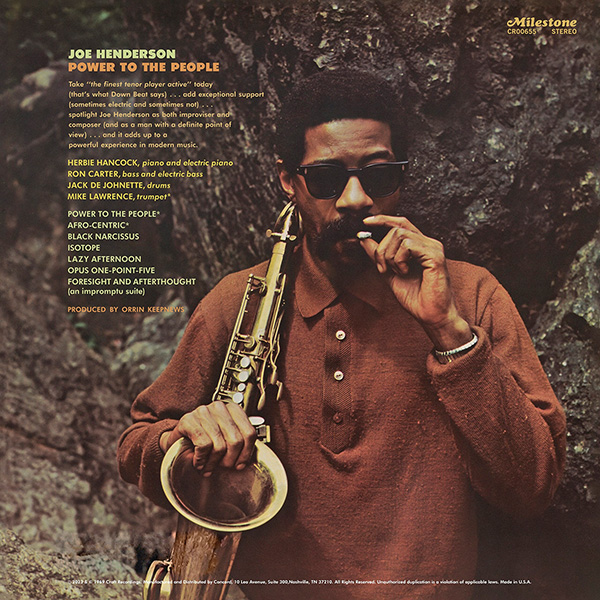
Musically, Power to the People shows both where Henderson had been as a player up to that time and, even more, what he and his music were evolving toward. The most obvious musical change is the appearance of electric instruments. The strength of the rhythm section alone makes Power to the People an unassailable classic. Ron Carter, repeatedly switching from acoustic standup to electric bass, is joined by the inventive and muscular playing of drummer Jack DeJohnette. Also, switching between acoustic piano and the unmistakable candied sound of the Fender Rhodes is Herbie Hancock. Finally, trumpeter Mike Lawrence adds his horn to a pair of tracks, the title number and "Afro-Centric."
The album opens with "Black Narcissus," one of Henderson's most famous tunes and one that would become the title track of a 1977 Henderson album. Here it's a beautiful ballad, showcasing Henderson's sensitivity and incisive ideas, reflected and refracted by Hancock's alternately forceful and delicate accompaniment on the Rhodes. This leads into "Afro-Centric," one of the trilogy of tracks, beginning with "Black Narcissus," now renowned as this album's masterpieces. With the unmistakable sound of Henderson dipping his toe into fusion, "Afro-Centric" features Hancock setting the pace on the Rhodes and a no-less-game Henderson venturing down many fruitful improvisatory lanes with modes ranging from honking to rolling. Hancock's mid-tune solo is a triumph. Lawrence's fluid trumpet is also a spur to the driving momentum of this fast, jam-inspired composition. Its fade ending has always seemed an odd choice but one that again points to the influence of rock-music production. That's followed incongruously by the slow, rich, warm-toned ballad "Opus One-Point-Five," a step back into Henderson's artful but familiar past.
As the last of the album's three fusion-influenced tracks, the title track opens with Lawrence and Henderson doubling parts before veering off into funky, inventive solos. In his first solo of this nearly nine-minute track, Henderson confidently pushes himself into hoarse skronking. Lawrence flutters and DeJohnette pulls out all the stops before Hancock outdoes himself with a ferocious Rhodes solo. True to the overarching rhythm of this album, any raw feelings stirred up by the title track are quickly assuaged by a gentle and relaxed "Lazy Afternoon," a tune Henderson recorded in 1965 with Pete La Roca on the drummer's Basra album. The finale, "Foresight and Afterthought," an energetic free-jazz explosion of bass, drums, and saxophone, hints at yet another trend in jazz that Henderson was exploring.
While some feel that Power to the People is where Henderson's music unfortunately strayed into fusion, abandoning the true flame of bebop to be tainted by rock and funk, these seven tracks, finally available again on a quality vinyl pressing, remain a tantalizing first step into the next essential period in his career. That direction would continue in such fusion/soul jazz–influenced albums as In Pursuit of Blackness (1971), Black Is the Color (1972), Multiple (1973), Canyon Lady (1975), and Black Narcissus (1977). Increasingly among jazz's younger aficionados, these visionary years of Henderson's recording life are now thought of as being the most influential in his far-reaching career.
- Log in or register to post comments
